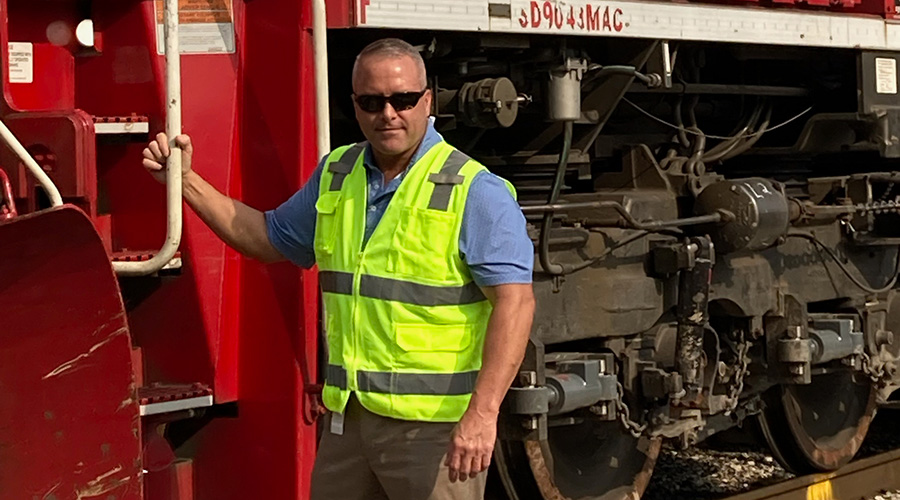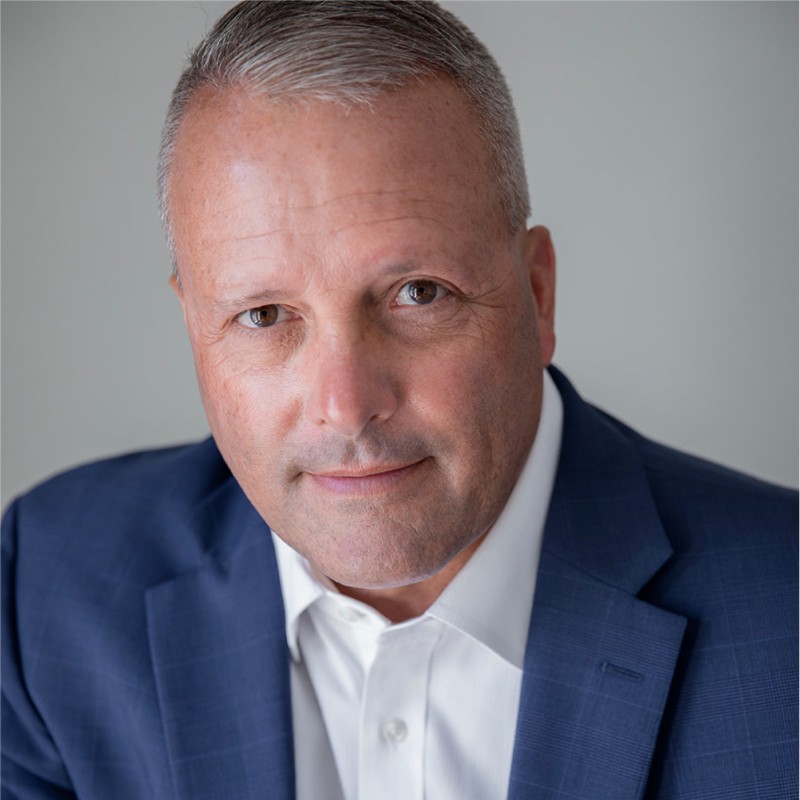Swindall strives to ensure Indiana Rail Road remains a crown jewel among short lines
7/26/2021
By Jeff Stagl, Managing Editor
Until several weeks ago, Indiana Rail Road Co. (INRD) had been governed by just two leaders since it was formed in 1986: founder Tom Hoback and Peter Mills. Hoback led the 250-mile regional until mid-2015, and then Mills took over.
But Dewayne Swindall succeeded Mills as president and chief executive officer in June. An industry veteran who began his railroading career in 1989, Swindall considers the Indianapolis-based INRD — which operates in central and southwest Indiana, and central Illinois — a crown jewel with talented employees.
“It’s located in an ideal position in the Midwest and has a good footprint for future growth. Indianapolis doesn’t have the large scale of a New York, Chicago or Dallas,” Swindall says. “I think the biggest deciding factor [in taking this job] was the opportunity or challenge to take a well-run and prosperous organization and lead it into the next level of evolution.”
Through the Hoback and Mills regimes, INRD continually invested in its infrastructure, and was able to land several federal grants to help cover the cost of improving bridges and other necessary work, Swindall says.
“The investments were critical to breathing new life into the railroad. When I saw the infrastructure, you couldn’t tell it’s not a Class I,” he says. “It has solid Class III infrastructure, and took years to get there. I am committed to continuing that.”
'Like being president of 13 railroads'
Swindall plans to rely on his knowledge and experience to lead INRD. After earning a bachelor of applied science degree in project management from Purdue University Global, he acquired a taste for railroading starting in 1989 while working in industrial switching for Gulf State Steel.
Swindall later joined Norfolk Southern Railway in the early 1990s and served as a conductor, engineer and yardmaster. He entered railroad management in 1999 as a terminal trainmaster for NS in Birmingham, Alabama, and later became a trainmaster in Chicago.
 “We need multi-faceted industrial development. You don’t only need to serve a customer by rail,” INRD’s Dewayne Swindall says. “We need to think of ourselves as a cog in a wheel of a supply chain, and involve other modes.”
“We need multi-faceted industrial development. You don’t only need to serve a customer by rail,” INRD’s Dewayne Swindall says. “We need to think of ourselves as a cog in a wheel of a supply chain, and involve other modes.”In 2004, Swindall joined CN as trainmaster in Jackson, Mississippi. When he transferred to Baton Rouge, Louisiana, a few years later, he met former CN leader and rail industry maverick E. Hunter Harrison, who helped Swindall become an assistant superintendent.
In June 2008, Swindall was recruited by Genesee & Wyoming Inc. (G&W) to serve as the general manager of four railroads. He later became vice president of transportation in G&W’s southern region, then senior vice president of the central region in 2014.
“It really was like being president of 13 railroads,” says Swindall.
He returned to CN in December 2017 as superintendent of network operations, then later became a regional GM working in Memphis, Tennessee.
“I have had the unique experience of being in both the Class I and short-line world — twice now — in my career. This has allowed me to understand the dynamic macroview of the industry rather than the traditional micro-focused view known from long tenures on the same side,” says Swindall.
At a Class I, you’re exposed to only a few departments, but at a short line, you’re exposed to everything, he says. How departments interact and work off of each other can make or break you, Swindall believes.
“The rail industry is like a big lake. You are a small fish at a Class I, where if you accomplish something, it might only make a ripple and you don’t always see the value in what you did,” he says. “At short lines, a small decision makes a big wave and every lever pulled impacts the economies of the railroad. What you do is more visible.”
Why INRD needs to diversify
Over the years, Swindall has witnessed just about every managerial style. His style calls for providing underlings a platform to evolve and learn new skills for success as future leaders.
“As humans, we have tendencies to use our strong traits, although they may not be successful in every work environment,” Swindall says. “I became focused on identifying strong behavior traits in managers and allowing them to work in areas that can develop other skill sets.”
What does he consider to be his Job No. 1 at INRD? Understanding its nuances and portfolio of business.
The railroad’s major headwind is declining coal volume due to less usage of steam-generating power plants across the Midwest. Once a key commodity, coal now accounts for less than half of INRD’s overall portfolio.
“A steam plant we serve will be shuttered in 2023, so we’ll only serve a few coal plants. Coal is falling off, so we’ll suffer if we’re not diversified,” Swindall says.
It’s vital that INRD focuses on industrial development within and beyond its current footprint through partnerships with logistics firms and Class Is.
“We need multi-faceted industrial development. You don’t only need to serve a customer by rail,” Swindall says. “We need to think of ourselves as a cog in a wheel of a supply chain, and involve other modes.”
Even gaining a couple more carloads per week can help the portfolio. The additional “onesies and twosies” can involve commodities that INRD already handles, such as plastics, rock, ethanol, coke and paper, Swindall says.
“I tell our people it’s OK to get a base hit, but we’re always cultivating for a home run, like a new facility that really moves the needle,” he says.
The railroad’s single-biggest growth engine is intermodal. INRD’s Senate Avenue Terminal in Indianapolis has considerable growth prospects, Swindall believes.
“We are not competing with Chicago by any means. CN has been our intermodal business partner for years, and we want to continue to grow with them,” he says.
INRD plans to increase the Indianapolis terminal’s footprint in the near future, such as by installing a new in-and-out-gate system so truck traffic flows more efficiently.
Swindall also aims to continue minding customer satisfaction. Since Hoback’s days, the regional has excelled at service performance, he says.
“Our surveys show we remain at a high level of customer satisfaction,” says Swindall. “I plan to carry on that tradition. Customer service is what we sell.”